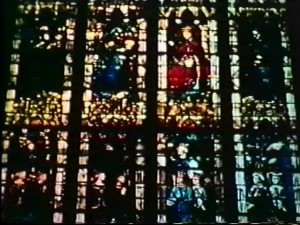
"Studies in Blue and Chartres Cathedral, a cerulean cinema achievement, one 400 foot reel in full Kodacolor by John V. Hansen, ACL, shows what an artist's and a colorist's eye can select and record. While this film is in some sense a travel record, Mr. Hansen definitely made it a point to choose those scenes and vistas that revealed the open sky, whether seen in patches through the interlaced branches of trees or as a dim, distance haze, shimmering up from the tops of far off mountains. Here are deep blue skies overhead, merging into white mist at the horizon, apple green, azure, so many hues that it is a revelation to see that a mechanical process can so beautifully record nature. Mr. Hansen presents to the audience's eyes such a varying kaleidoscope of blending colors in his continuity that it is difficult to do the entire effect justice by mere description. But among his outstanding technical achievements are the recording of sunlit glades in a dense forest, especially effective cloud and sunset shots, distant and close shots and side lighting and backlighting in profusion. A further, outstanding triumph in color technique was shown in Mr. Hansen's recording of the vivid, glowing hues of the stained glass windows, taken from the interior of the cathedral at Chartres. Here, he succeeded in capturing that peculiar, deep dyed transparency found only in the colors of old stained glass. It is questionable if any other method of reproducing color can give such a real and beautiful rendition of stained windows as the motion picture. Certainly no color printing process can compete. The film was rounded out by some charming long shots of the carefully cultivated, rolling hills of Denmark." Movie Makers, Dec. 1932, 538, 560.

"A Study in Reds, that women's club film of a sovietized America, has been successfully completed and the club, a very pillar of society in its community, has been made safe, by the experiment, for Democracy. The Five Year Plan called for the production of ten eggs a day, so that there was none left for the onetime owner of the chickens; children seemed to get mixed on their return from the communistic nursery; and the police ate all the tidbits from the workers' lunches, so that in the end the good ladies of the club returned contentedly to the stultifying, but more reassuring, banalities of private ownership. Miriam Bennet, ACL, of Wisconsin Dells, was the director and cameraman of this reversal of the customary Sovkino drama" Movie Makers, Aug. 1932, 361.
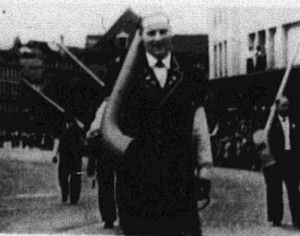
"A beautiful travelogue of Switzerland, showing herding of cattle and the religious festivals. Native Swiss yodeling music is used. Film is well planned and executed, camera work is very fine." PSA Journal, Nov. 1956, 22.
"Item is a production of Dr. Willinsky's trip to Switzerland with his wife, Sadie. In the form of a travelogue, footage of landmarks, the landscape and the local population is interspersed with captions and accompanied by music and Dr. Willinsky's commentary. Footage includes sites around Berne, Yungfraujoch, and Lucerne. Sadie is occassionally spotted sight-seeing and interacting with locals." Ontario Jewish Archives.
"Telemark, filmed in the Swiss Alps by William G. McKelvy, ACL, is, as its name suggests, a skiing picture. However, it is more than that — it is also a very delightful and neatly plotted comedy that is the more convincing for being uncomplicated with the usual subsidiary plot and counter plot. Four or five youths who are expert skiers, one who is a novice, and a girl are at the beginning of a down mountain ski trail. The girl offers a kiss to the boy who can catch her. She tarts off, the able skiers follow hard on her trail, while the beginner stumbles and lags far behind. But the girl decides to trick her pursuers and hides on the way. The ending is obvious. The picture was exquisitely planned and sequenced for, as the camera follows the skiers down the mountain, there is complete smoothness in the shift of viewpoints. The action is made the occasion of splendid studies, as the boys on the run swerve and turn in stems, Christianias and Telemarks. Mr. McKelvy did not neglect to select charming compositions and to take full advantage of clear air and the contrast between the dark figures and trees and the white snow." Movie Makers, Dec. 1933, 500.
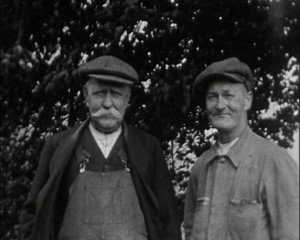
"Local newsreel on events in Thetford filmed by Ben Culey, showing the Palace Cinema, which he owned and where people came to see his local news films." (EAFA Database)
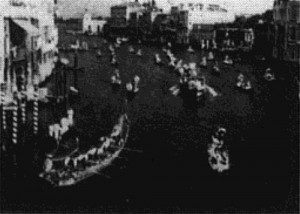
"In a gondola we move about the canals of Venice to see the sights and wonders of that ancient city, at one time home of the masters of the Mediterranean. There are boats, buildings, people, some in their windows ornamented with flower boxes, children at play in the land of no streets, gardens for the better-to-do citizens, and the famous clock and doves of St. Mark's Square. On the first Sunday of September each year the regatta is shown in all its color and pageantry" PSA Journal, Oct. 1961, 49
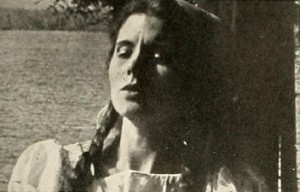
"The prizewinner for color, 'This Side of Paradise,' was in Kodachrome and entered by A. Scott Moorhouse of Toronto, a member of the Toronto Amateur Movie Club. The locale of the subject was the Italian and Swiss mountains and lakes. The decision on color or rather the reaching of it constituted one of the committee's chief headaches. There were some remarkable examples submitted. Mr. Moorhouse has a right to feel proud of his product." American Cinematographer, Jan. 1938, 27.
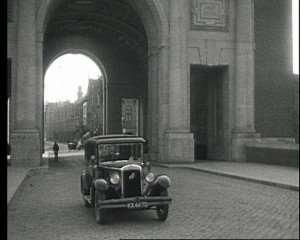
(Reel 1) - "First in a series of eight film reels recording Eustace and Eunice Alliott’s trip to and from the Oberammergau Passion Play in 1930, by way of a motor tour through Belgium, Luxembourg and the Rhine, before travelling further south to northern Italy, Liechtenstein and Switzerland, returning to London via Germany and Belgium. The first reel in this series records details of Alliotts' journey through Belgium and Luxembourg. Scenes include: visits to war memorials and observations of activities of local inhabitants. The visits to war memorials notably emphasise connections or interests that Eustace Alliott might have had or felt towards the sacrifices made by engineers or men from Lancashire. Scenes include: the Alliotts' car being loaded on to a ferry at Dover; shots of Ypres, notably the ruins of the Cloth Hall, the Menin Gate and market scenes near the Cloth Hall; visits to war memorials near Ypres, including Hill 60, Zillebeke, the Tyne Cot cemetery and the church at Passchendaele; the journey through Belgium including visits to Courtrai, Tournai, Mons and Namur, where the Alliotts' record celebrations of the centenary of Belgian independence; the journey by the Rivers Sambre and Meuse including their visits to Old Dinant and Chateau de Walzin; and time spent in in the gardens, streets and alleys of Luxembourg. Shots at Belgian war memorials include: a visit to the Hill 60 war memorial, where Eunice, along with members of the Farnham girl guides, inspect a concrete bunker; walk through and inspect a trench at Zillebeke, including a shot of the trench and abandoned munitions (trench now filled in, see http://www.ww1battlefields.co.uk/flanders/hill60.html); a visit to the Tyne Cot cemetery where Eunice inspects the inscription at the base of the Great Cross, including a clear shot of the inscription that has since been corrected (it reads captured by 2nd Australian Division [now corrected to 3rd Australian Division] 24 October 1917); at Tyne Cot Eunice walks past and looks at the Tyne Cot Memorial to the Missing; there is a shot of a headstone of one of the unidentified servicemen of the Royal Engineers; by the side of a road Eunice retrieves a discarded helmet; there is a shot of the Passchendaele church window memorial to British dead from “Duchy of Lancaster”. Shots at Namur for the centenary celebration of Belgian independence include: a procession of soldiers and dignitaries; Eunice with members of a Pierrot troupe, including shots of the troupe in a street procession." (EAFA Database)
(Reel 2) - "Second in a series of film reels recording Eustace and Eunice Alliott’s trip to and from the Oberammergau Passion Play in 1930, by way of a motor tour through Belgium, Luxembourg and the Rhine, before travelling further south to northern Italy, Liechtenstein and Switzerland, returning to London via Germany and Belgium. The second reel in this series records details of Alliotts' journey from Trier along the Moselle and Rhine river valleys [through the demilitarised area of Germany established by the Treaty of Versailles] to Bensheim. Scenes include: tourist attractions and observations of activities of local inhabitants. Shots of tourist attractions include: historic monuments in Trier; a visit to a Traben vineyard; castles along the Moselle and Rhine valleys; the Wilhelm I monument in Koblenz. Shots of local activities include: the market places in Trier and Bernkastel; agricultural labourers in the Moselle valley transporting hay; women and children bleaching linen by the side of the river in Bernkastel; agricultural labourers using ferries near Traben and fruit being picked along the road; river traffic on the Rhine at Koblenz with particular emphasis on the operation of a bridge consisting of boats. The reel concludes with a record of the Corpus Christi street celebrations in Bensheim. Many of the scenes include Eunice Alliott, who walks or drives into shot, or interacts with local inhabitants, or perhaps has persuaded individuals to pose for the camera, such as children at the Roman Basilica in Trier and a two man band in Stoltzenfels." (EAFA Database)
(Reel 3) - "Third in a series of film reels recording Eustace and Eunice Alliott’s trip to and from the Oberammergau Passion Play in 1930, by way of a motor tour through Belgium, Luxembourg and the Rhine, before travelling further south to northern Italy, Liechtenstein and Switzerland, returning to London via Germany and Belgium. The third reel in this series records details of Alliotts' journey from Heidelburg through the Neckar valley and Bavaria to Oberammergau, including shots of Oberammergau and the surrounding mountains. Scenes include: visits to historic monuments and tourist attractions as well as observations of the activities of local inhabitants. Notably, the film reel includes a day out with unidentified friends in Heidelberg and perhaps inadvertently a shot of the presence and activities of the national socialist party in and near Heidelberg.
Shots of tourist attractions and historic monuments include Heidelberg Cathedral and square, including a building with the sign ‘National Sozialistische Deutsche Arbeitespartei’; Heidelberg castle; river cruise boats at Neckargemünd; Ulm cathedral; and as the Alliotts' approach Oberammergau shots of the landscape. Shots of the activities of local inhabitants include: children playing by the river at Neckargemünd; a youth rambling group in the Neckar Valley; street scenes in Neckarsulm and a fair outside Ulm cathedral; street scenes in Oberammergau, highlighting the numbers of tourists in the village for the passion play. Many of the scenes include Eunice Alliott, who walks or drives into/ out of shot, such as watching a steam tug on the Neckar or admiring the view at Schongau or leaving Neckarsulm. Both Eustace and Eunice Alliott appear in shot during the picnic at Heidelberg. Notably Eustace Alliott appears in shot at Heidelberg, Schongau and possibly once driving the Austin Sixteen. Eustace Alliott also features in the section following the intertitle ‘Part II – Oberammergau, June 1930’, appearing mountain walking near the Kofel mountain and mountains overlooking Oberammergau." (EAFA Database)
(Reel 4) - "Fourth of a series of film reels recording Eustace and Eunice Alliott’s trip to and from the Oberammergau Passion Play in 1930, by way of a motor tour through Belgium, Luxembourg and the Rhine, before travelling further south to northern Italy, Liechtenstein and Switzerland, returning to London via Germany and Belgium. The fourth reel in this series records details of Alliotts' stay in Oberammergau, focusing on the 1930 Passion Play and their interaction with key members of the cast. Shots include: women washing and drying laundry away from the main streets; the Alliotts' accommodation and host; crowds outside the theatre; official photographs of the production; audience and actors leaving auditorium; meetings with key actors in the production, notably Anton Lang (Prologue) with Eunice; Alois Lang (Christ), Anni Rutz (Mary) with Eunice; Johanna Preisinger (Magdelene); unidentified actor (John); Guido Mayr (Judas) with Eunice." (EAFA Database)
(Reel 5) - "Fifth of a series of film reels recording Eustace and Eunice Alliott’s trip to and from the Oberammergau Passion Play in 1930, by way of a motor tour through Belgium, Luxembourg and the Rhine, before travelling further south to northern Italy, Liechtenstein and Switzerland, returning to London via Germany and Belgium. The fifth reel in this series records details of Alliotts' journey through the Tyrol in Austria, and Italy. The records details of the Alpine scenery and observations of the activities of the inhabitants in the Tyrol, with a particular fascination with agricultural labour and the work of women. Shots include: the Alliotts leaving Oberammergau; flags in Mittenwald celebrating the ‘freeing’ of the Rhine; alpine landscapes in the Tyrol at Seefeld, Reith im Alpbachtal, Lanser Kopfe, Hafelekar, Serles, Vipeteno, Lake Misurina, Croci Pass and Monte Piana; agricultural and rural labour in the Tyrol; women washing laundry in a village in the Stubaithal; road construction near Misurina; the Austin Sixteen off the road ascending Monte Piana, assistance provided by Austrian motorists." (EAFA Database)
(Reel 6) - "Sixth in a series of film reels recording Eustace and Eunice Alliott’s trip to and from the Oberammergau Passion Play in 1930, by way of a motor tour through Belgium, Luxembourg and the Rhine, before travelling further south to northern Italy, Liechtenstein and Switzerland, returning to London via Germany and Belgium. The sixth reel in this series records details of Alliotts' journey through northern Italy from the Dolomites to Lake Como. Scenes include: landscape shots of mountain peaks (including the Dolomites, and mountain peaks at the Stelvio Pass); observations of the local population and activities (including children, villagers, and soldiers who pose for the camera in the Dolomites; village street scenes in the Karerpass [Costalunga Pass]; agricultural labourers engaged in harvesting; fishing on Lake Como; and the progress of road improvements around Lake Como); a stop at a roadside war memorial in the Karerpass and in the Stelvio Pass Eunice examines reminders of war found by the roadside; visits to local sightseeing attractions on Lake Como, as well as boat trip on the lake. Notably, as in other reels, the scenes in this film record work done by women as part of the agricultural workforce and in domestic duties, with shots of women engaged in harvest work and washing laundry." (EAFA Database)
(Reel 7) - "Seventh in a series of film reels recording Eustace and Eunice Alliott’s trip to and from the Oberammergau Passion Play in 1930, by way of a motor tour through Belgium, Luxembourg and the Rhine, before travelling further south to northern Italy, Liechtenstein and Switzerland, returning to London via Germany and Belgium. The seventh reel in this series records details of Alliotts' journey from northern Italy to Switzerland, passing through Liechtenstein. Scenes include: sightseeing in Milan; mountain walks at the Morteratsch glacier and in the Bernina Pass in Switzerland; a stop at a fortified border post in Liechtenstein; sightseeing at Vaduz castle; a meeting with a female peddler; a street scene in Altdorf; views of Lake Lucerne; and a visit to the Rhone glacier. Shots of local sightseeing attractions in Milan include Galleria Vittorio Emanuele and Milan Cathedral; street scenes outside the cathedral; Eunice tours the roof of Milan Cathedral; pan shot from roof over Milan; Eunice walks in the gardens at Santa Maria delle Grazie. Shots in the Alps include Eustace observing the view at the Morteratsch glacier; mountain scenery at the Bernina Pass; views from and in the castle at Vaduz; a peddler in Clausen Pass; female swineherds; the fountain at Altdorf, the river at Andermatt; the Rhone glacier with shots of Eunice walking on the glacier and with other tourists at an ice cavern, as well as of the valley below glacier and the glacier from valley." (EAFA Database)
(Reel 8) - "Final reel (in a series of eight) recording Eustace and Eunice Alliott’s trip to and from the Oberammergau Passion Play in 1930, by way of a motor tour through Belgium, Luxembourg and the Rhine, before travelling further south to northern Italy, Liechtenstein and Switzerland, returning to London via Germany and Belgium. The final reel in this series records details of the Alliotts' return journey from Switzerland through Germany and Belgium to London. Scenes include: unusual sights encountered on the road, records of visits to areas of scenic beauty and sightseeing tours in towns and cities, as well as observations of the activities of local inhabitants. Shots include: an encounter with cattle on the road in Switzerland; waterfalls at the Handegg and Rhine Falls; lumber being moved near Titisee; street scenes at Freiburg, including shots of the market near the cathedral and shots of people wearing traditional clothing; sights in Baden-Baden, Worms, Frankfurt, Louvain and Ghent, including the Luther Memorial, market place in Frankfurt and Van Eyck Monument; observations of activities in Ghent, including a boat being unloaded. The film concludes with a shot of the fountains in Trafalgar Square. Notably, on their return visit to Koblenz the Alliotts' obtain shots of a rehearsal for a visit by Hindenburg, on the Deutches Eck, including a long shot of a small group of national socialists amongst the crowd who perform a salute. Shots also reflect the Alliotts' interest in mechanical engineering (the ferry across the Rhine near Karlsruhe) and dogs (Ghent and Bruges)." (EAFA Database)
Total Pages: 15